What is rheumatoid arthritis?
Rheumatoid arthritis (RA) is a chronic autoimmune condition that causes discomfort, swelling and stiffness in the lining of your joints. It most often affects joints in your fingers, hands, wrists, knees, ankles, feet and toes. Unlike other types of arthritis, RA typically affects joints on both sides of the body.
An autoimmune condition happens when the immune system, which normally protects the body, becomes confused and starts attacking healthy tissues. In rheumatoid arthritis, this happens when the immune system causes inflammation in the joints.
You can manage RA effectively if it is diagnosed early. However, if left untreated, the condition causes serious side effects, such as joint deformities and disability.
Rheumatoid arthritis symptoms
Signs and symptoms of rheumatoid arthritis may include:
- Pain, aching or stiffness in more than one joint
- Tender, warm, swollen joints
- Stiffness, especially in the mornings or after periods of inactivity
- Fatigue
- Fever
- Loss of appetite
Early RA often affects smaller joints, like those in the fingers and toes. As the condition progresses, it may spread to larger joints, including the wrists, knees and shoulders. Symptoms usually affect both sides of the body equally.
About 40% of people with RA may also experience symptoms beyond the joints, affecting areas such as the skin, eyes, lungs, heart, kidneys, salivary glands, nerve tissue and blood vessels.
The symptoms of RA can vary in how severe they are and may come and go. There are times when symptoms get worse, known as flares, followed by periods of improvement, called remission, when discomfort and swelling may lessen or go away. If left untreated, RA can cause joints to change shape or shift over time.
When to see a doctor
See your doctor if you experience joint pain or other symptoms that last three or more days. You should also see a doctor if you develop joint pain multiple times a month.
RA can cause permanent joint damage. An early diagnosis allows you to receive treatment for the condition before long-term damage occurs, and can offer relief from symptoms.
What causes rheumatoid arthritis?
Rheumatoid arthritis occurs when the immune system attacks healthy tissues within the joint. Doctors do not know what causes it. Some people are thought to be genetically predisposed to the condition. But environmental triggers, such as chemicals or infections, may cause the immune system to react improperly.
With RA, the immune system releases cells that attack the synovium, a tissue within the joint that produces fluid to ease movement. The cells cause the synovium to become inflamed, which causes pain and other symptoms in your joints. Over time, the synovium becomes thicker and begins damaging surrounding bone and cartilage, which causes the joint to stretch. This stretching causes weakness and instability in the muscles, tendons and ligaments around the joint, which, in turn, may lead to joint deformity, permanent stiffness and other long-term joint damage.
RA risk factors
Factors that may increase your risk of rheumatoid arthritis include:
Age
RA can occur at any age, but it commonly develops in mid-life, usually after age 30.
Family history
You may be more likely to get rheumatoid arthritis if a close relative also has the condition.
Genetics
Researchers have identified gene mutations associated with immune system function that may increase your risk of developing RA.
Infections
Bacterial infections, such as periodontitis, and viral infections may increase the risk of developing RA.
Obesity
Excess weight may make you more prone to developing rheumatoid arthritis and interfere with the effectiveness of treatments.
Sex
Women are more than twice as likely to develop RA than men and people assigned male at birth.
Smoking
Smoking causes inflammation and other damage throughout the body that has been linked to rheumatoid arthritis. People who smoke have a higher risk of developing RA than people who don’t smoke.
Possible complications
Seeking help for symptoms of RA allows your doctor to diagnose and treat it early. Although the condition cannot be cured, treatments can prevent it from getting worse and causing other conditions, such as:
- Anemia: RA can lower your red blood cell count, a condition known as anemia.
- Cardiovascular disease: People with rheumatoid arthritis have a higher risk of cardiovascular disease, which includes conditions like heart attack and stroke, though the exact reason for this increased risk is unclear.
- Carpal tunnel syndrome: Carpal tunnel syndrome, common in people with rheumatoid arthritis, occurs due to compression of the median nerve and causes symptoms like aching, numbness and tingling in the hand.
- Widespread inflammation: Rheumatoid arthritis can cause widespread inflammation in the body, affecting the lungs (leading to chest pain and shortness of breath), heart (causing pericarditis and chest pain), eyes (causing pain or dryness), and blood vessels (leading to vasculitis, which can restrict blood flow and be life-threatening).
- Osteoporosis: Rheumatoid arthritis and some of its treatments can affect bone mass, making you more prone to osteoporosis.
- Permanent joint damage: If rheumatoid arthritis isn't treated early or controlled, joint inflammation can cause permanent damage, including harm to bones, cartilage, tendons (which may rupture) and joint deformities.
- Rheumatoid nodules: Rheumatoid arthritis may cause small bumps to form under the skin.
How is rheumatoid arthritis diagnosed?
Diagnosing rheumatoid arthritis usually includes a physical exam, imaging tests and blood tests. If RA is in very early stages when you see your doctor, it may be difficult to diagnose because symptoms may be mild and not clearly linked to the condition.
-
Medical history and exam
Your doctor will ask about your medical history and whether other family members have been living with rheumatoid arthritis. Your doctor will also ask for details about your symptoms, such as where they occur and how long you’ve had them. They’ll check your joints for limited range of motion, swelling, redness and tenderness, and they may look for other symptoms, such as a fever or rheumatoid nodules.
-
Blood tests
No single blood test can confirm rheumatoid arthritis, but several tests can suggest the condition.
Some of the main blood tests used include:
- Erythrocyte sedimentation rate (ESR): Measures how quickly red blood cells settle, with faster rates indicating inflammation.
- C-reactive protein (CRP): Checks for inflammation by measuring CRP levels in the blood.
- Full blood count: Measures red blood cells, as low counts can suggest anemia, which is common in RA.
- Rheumatoid factor and anti-CCP antibodies: High levels of rheumatoid factor or anti-CCP antibodies can suggest RA, though not everyone with RA tests positive for both.
-
Imaging
In addition to blood tests, your doctor may use imaging tests to help diagnose rheumatoid arthritis and assess joint damage. These tests can provide detailed images of your joints and surrounding tissues. Some common imaging tests include:
- X-rays: These are used to check for changes or damage in your joints, such as bone erosion or narrowing of the joint space.
- Ultrasound: High-frequency sound waves create real-time images of your joints, helping to detect inflammation or fluid buildup around the joints.
- Magnetic Resonance Imaging (MRI) scans: MRI uses strong magnetic fields and radio waves to produce detailed images of soft tissues, including the cartilage, tendons, and ligaments around the joints. This can help detect early signs of joint damage that may not be visible on X-rays.
These imaging tests, combined with your symptoms and blood work, can help your doctor better understand the extent of joint involvement and guide treatment decisions.
Rheumatoid arthritis treatment
Although there is no cure for RA, treatment can help you manage symptoms, slow the progression of your condition and lower your chances of developing complications. Doctors from different specialties treat various aspects of rheumatoid arthritis, so you may work with a primary care provider, rheumatologist or orthopedic surgeon during your treatment.
Treatment typically starts with medications, but your provider may also recommend making certain lifestyle changes and receiving physical or occupational therapy. You may need surgery if you have severe joint damage or pain that interferes with your ability to go about your daily life.
Medication
Medications help many people with RA improve their quality of life. Some medications relieve inflammation and other symptoms, while others stop or slow the condition from progressing. You will likely take more than one type of medication.
- Corticosteroid injections: Your doctor may recommend these injections to address joint pain in the short term.
- Nonsteroidal anti-inflammatory drugs (NSAIDs): NSAIDs can help control pain and swelling. Many types, including ibuprofen and naproxen, are available over the counter, but your doctor can prescribe stronger NSAIDs if over-the-counter medications don’t bring adequate relief.
- Disease-modifying antirheumatic drugs (DMARDs): These medications help prevent your immune system from attacking your joints, preventing RA from worsening. There are many types of DMARDs, some given in pill form and some delivered by injection or intravenous (IV) infusion.
- Janus kinase (JAK) inhibitors: JAK inhibitors are a type of DMARD your doctor may recommend if your first treatment isn’t effective. These medications help prevent immune cells from causing the inflammation that causes pain and joint deterioration.
Physical and occupational therapy
Physical therapy can help improve your fitness, strength and joint flexibility. For hands or wrists, a customized exercise program may be provided, with both in-person and home exercises. Physical therapists can also use treatments like heat, ice or TENS (a small electrical pulse to numb pain) for relief.
If rheumatoid arthritis affects daily tasks, an occupational therapist can guide joint protection at home and work. They may recommend splints or assistive devices to make tasks easier, like tools to open jars or turn faucets.
Complementary therapies
Complementary treatments can be helpful in managing rheumatoid arthritis symptoms when used alongside your prescribed medications. However, they should never replace the treatments your doctor has prescribed. It's important to always consult with your healthcare team, particularly your rheumatology team, before trying any integrative medicine.
Some common complementary treatments that may support your RA management include:
- Acupuncture
- Chiropractic care
- Massage therapy
- Osteopathy
Always discuss these treatments with your doctor to ensure they are safe and appropriate for your specific condition.
Surgery
If medications aren't enough to prevent or slow joint damage, surgery may be an option to repair the affected joints. Surgery can help relieve pain, improve movement and restore joint function.
There are several types of surgery that may be considered for rheumatoid arthritis, including:
- Joint fusion: The most common procedure to treat RA is joint fusion, surgery to permanently connect bones. Two bones are fused into a single bone, eliminating painful movement and allowing for a more stable joint.
- Joint replacement surgery: During joint replacement, an orthopedic surgeon replaces a damaged joint with an artificial joint made of ceramic, metal or plastic. You can have a joint replacement in any joint, and the procedure helps reduce pain associated with significant damage.
- Synovectomy: This procedure involves removing the synovium. It’s typically reserved for people with early-stage rheumatoid arthritis that has damaged only the joint lining.
- Tendon surgery: RA can also affect a type of tissue called tenosynovium, a tissue that lines tunnels in the fingers, wrists, toes and ankles through which tendons travel. Damaged tenosynovium can cause tendons to fray or tear, which may require surgery.
Find a location near you
We offer several locations for your care, including specialty arthritis centers in North and Central Texas.

Baylor Scott & White Family Medicine Residency - Waxahachie
2460 N Interstate 35E Ste 215, Waxahachie, TX, 75165- Monday: 8:00 am - 5:00 pm
- Tuesday: 8:00 am - 5:00 pm
- Wednesday: 8:00 am - 5:00 pm
- Thursday: 8:00 am - 5:00 pm
- Friday: 8:00 am - 5:00 pm

Baylor Scott & White Institute for Rehabilitation - Avery Ranch
15004 Avery Ranch Blvd Bldg C, Ste 101, Austin, TX, 78717- Monday: 9:00 am - 7:00 pm
- Tuesday: 7:00 am - 7:00 pm
- Wednesday: 9:00 am - 7:00 pm
- Thursday: 7:15 am - 7:00 pm
- Friday: 7:00 am - 7:00 pm

Baylor Scott & White Institute for Rehabilitation - Burleson
12500 South Fwy Ste 201, Burleson, TX, 76028
Baylor Scott & White Institute for Rehabilitation - Carrollton Sandy Lake
1850 Legends Trl , Carrollton, TX, 75006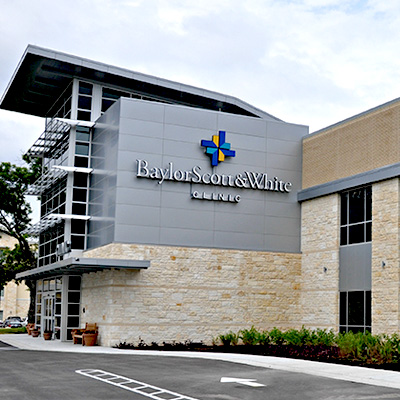
Baylor Scott & White Institute for Rehabilitation - Cedar Park East
701 East Whitestone Blvd Ste 100, Cedar Park, TX, 78613- Monday: 7:00 am - 7:00 pm
- Tuesday: 7:00 am - 7:00 pm
- Wednesday: 7:00 am - 7:00 pm
- Thursday: 7:00 am - 7:00 pm
- Friday: 7:00 am - 7:00 pm

Baylor Scott & White Institute for Rehabilitation - Cedar Park West
500 W Whitestone Blvd Ste 101, Cedar Park, TX, 78613- Monday: 7:00 am - 7:00 pm
- Tuesday: 7:00 am - 7:00 pm
- Wednesday: 7:00 am - 7:00 pm
- Thursday: 7:00 am - 7:00 pm
- Friday: 7:00 am - 7:00 pm
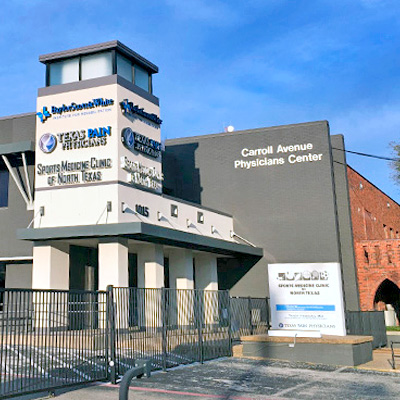
Baylor Scott & White Institute for Rehabilitation - Dallas Carroll Ave
1015 N Carroll Ave Ste 100, Dallas, TX, 75204
Baylor Scott & White Institute for Rehabilitation - Dallas N. Washington Ave
411 N Washington Ave Ste 3900, Dallas, TX, 75246
Baylor Scott & White Institute for Rehabilitation - Far West
6818 Austin Center Blvd Ste 111, Austin, TX, 78731
Baylor Scott & White Institute for Rehabilitation - Fort Worth Camp Bowie
3621 Camp Bowie Blvd , Fort Worth, TX, 76107
Baylor Scott & White Institute for Rehabilitation - Frisco Main
5858 Main St Ste 160, Frisco, TX, 75033
Baylor Scott & White Institute for Rehabilitation - Ft Worth Bryant Irvin
4901 Bryant Irving Rd N Ste 200, Fort Worth, TX, 76107
Baylor Scott & White Institute for Rehabilitation - Garland Shiloh
333 N Shiloh Rd Ste 108, Garland, TX, 75042
Baylor Scott & White Institute for Rehabilitation - Georgetown
4112 Williams Dr Ste 103, Georgetown, TX, 78628
Baylor Scott & White Institute for Rehabilitation - Georgetown Northwest
5353 Williams Dr Ste 100, Georgetown, TX, 78633
Baylor Scott & White Institute for Rehabilitation - Grapevine
1643 Lancaster Dr Ste 100, Grapevine, TX, 76051
Baylor Scott & White Institute for Rehabilitation - Hutto
567 FM 685 (Chris Kelley Blvd) , Hutto, TX, 78634
Baylor Scott & White Institute for Rehabilitation - Irving MacArthur
2001 N MacArthur Blvd Bldg I, Ste 550, Irving, TX, 75061
Baylor Scott & White Institute for Rehabilitation - Kyle Parkway
5695 Kyle Pkwy Ste 140, Kyle, TX, 78640
Baylor Scott & White Institute for Rehabilitation - Leander
1007 S Highway 183 , Leander, TX, 78641
Baylor Scott & White Institute for Rehabilitation - Liberty Hill
14125 W State Hwy 29 Ste B204, Liberty Hill, TX, 78642
Baylor Scott & White Institute for Rehabilitation - Little Elm
2700 E Eldorado Pkwy Ste 409, Little Elm, TX, 75068
Baylor Scott & White Institute for Rehabilitation - Manor
12400 Gregg Manor Rd Ste 101, Manor, TX, 78653
Baylor Scott & White Institute for Rehabilitation - McKinney Eldorado
2960 Eldorado Pkwy Ste 75, McKinney, TX, 75070
Baylor Scott & White Institute for Rehabilitation - McKinney Lake Forest
5236 W University Dr Ste 3500, McKinney, TX, 75071
Baylor Scott & White Institute for Rehabilitation - McKinney Red Bud
1705 W University Dr Ste 119, McKinney, TX, 75069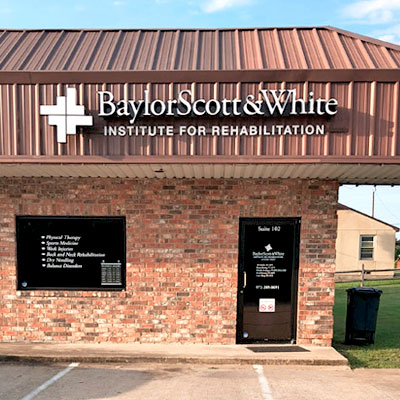
Baylor Scott & White Institute for Rehabilitation - Mesquite Belt Line
1313 N Belt Line Rd Ste 102, Mesquite, TX, 75149
Baylor Scott & White Institute for Rehabilitation - Mesquite Republic
1650 Republic Pkwy Ste 103, Mesquite, TX, 75150
Baylor Scott & White Institute for Rehabilitation - Mid-Cities
6501 Precinct Line Rd Ste 200, North Richland Hills, TX, 76182
Baylor Scott & White Institute for Rehabilitation - Midlothian
1441 S Midlothian Pkwy Ste 170, Midlothian, TX, 76065
Baylor Scott & White Institute for Rehabilitation - Murphy
511 W FM 544 Ste 208, Murphy, TX, 75094
Baylor Scott & White Institute for Rehabilitation - North Arlington
4120 SH 360 Suite 105, Fort Worth, TX, 76155
Baylor Scott & White Institute for Rehabilitation - North Dallas Coit
510 N Coit Rd Ste 2035, Richardson, TX, 75080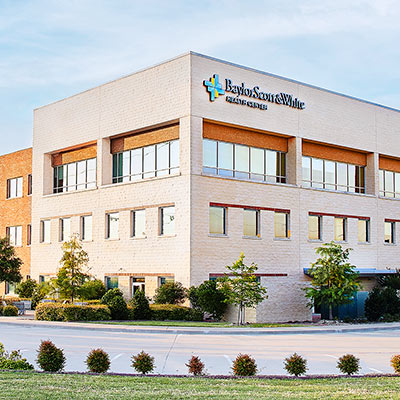
Baylor Scott & White Institute for Rehabilitation - North Garland
7217 Telecom Pkwy Ste 200, Garland, TX, 75044
Baylor Scott & White Institute for Rehabilitation - Pflugerville
16051 Dessau Rd Ste A, Pflugerville, TX, 78660
Baylor Scott & White Institute for Rehabilitation - Plano Alliance
4825 Alliance Blvd Ste 200, Plano, TX, 75093
Baylor Scott & White Institute for Rehabilitation - Plano West Parker
4701 W Parker Rd Ste 625, Plano, TX, 75093
Baylor Scott & White Institute for Rehabilitation - Red River
3200 Red River St Ste 101, Austin, TX, 78705
Baylor Scott & White Institute for Rehabilitation - Richardson Collins
1740 N Collins Blvd Ste 100, Richardson, TX, 75080
Baylor Scott & White Institute for Rehabilitation - Round Rock
116 Sundance Pkwy Ste 400, Round Rock, TX, 78681
Baylor Scott & White Institute for Rehabilitation - Round Rock University
300A University Blvd , Round Rock, TX, 78665
Baylor Scott & White Institute for Rehabilitation - South Grand Prairie
2950 W Camp Wisdom Rd Ste 200, Grand Prairie, TX, 75052
Baylor Scott & White Institute for Rehabilitation - South Lamar
3901 S Lamar Blvd Ste 140, Austin, TX, 78704
Baylor Scott & White Institute for Rehabilitation - Terrell
512 American Wy Ste E4, E5, E6, Terrell, TX, 75160
Baylor Scott & White Institute for Rehabilitation - The Colony
4897 State Highway 121 , The Colony, TX, 75056
Baylor Scott & White Institute for Rehabilitation - Waxahachie
2460 N. Interstate 35E Suite 260, Waxahachie, TX, 75165
Baylor Scott & White Institute for Rehabilitation - Weatherford
2035 Fort Worth Hwy Ste 300, Weatherford, TX, 76086
Baylor Scott & White Institute for Rehabilitation - West 38th St.
711 W 38th St Suites B3 & B4, Austin, TX, 78705
Baylor Scott & White Institute for Rehabilitation - Wylie
600 Cooper Dr Ste 130, Wylie, TX, 75098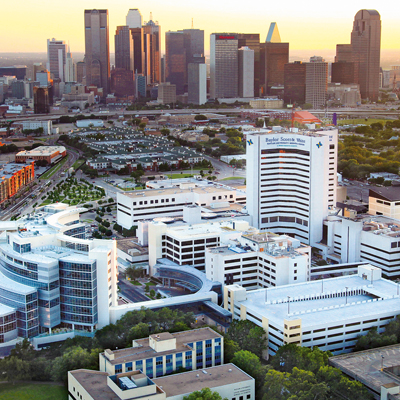
Baylor University Medical Center, part of Baylor Scott & White Health
3500 Gaston Ave , Dallas, TX, 75246Hours of Operation
Hours of Operation
Office Hours
Frequently asked questions
-
Can rheumatoid arthritis be cured?
There is no cure for rheumatoid arthritis. However, medications can help stop the condition’s progression and lessen pain and stiffness so you can live an active, full life with RA.
-
Is rheumatoid arthritis genetic?
Yes, rheumatoid arthritis (RA) has a genetic link. A family history increases your risk, with identical twins showing a 12 to 15% chance of both developing RA. Variations in HLA genes, particularly HLA-DRB1, are significant risk factors, contributing to RA's 60% heritability. However, environmental and other factors also play a role.
-
Can rheumatoid arthritis cause fatigue?
Yes, rheumatoid arthritis can cause fatigue, a common and overwhelming symptom that affects over 90% of patients. This extreme tiredness, different from normal fatigue, stems from RA-related inflammation, anemia, poor sleep and mood changes. Managing fatigue may involve exercise, cognitive-behavioral therapy, and pacing daily activities to conserve energy.
-
Can rheumatoid arthritis affect your eyes?
Yes, rheumatoid arthritis can affect the eyes in different ways. Common issues include dry eyes, often causing a gritty or watery sensation, and inflammation in the whites of the eye, leading to redness and pain. RA may also contribute to cataracts, keratitis, glaucoma or retinal problems, requiring careful management.
-
Can rheumatoid arthritis cause neuropathy?
Yes, rheumatoid arthritis can cause neuropathy, affecting nerves and leading to symptoms like pain, numbness or weakness. Common types include:
- Peripheral neuropathy, often felt in the lower limbs
- Carpal tunnel syndrome, impacting the wrists
- Tarsal tunnel syndrome, affecting the feet
Other rare types include cervical myelopathy and sensorimotor neuropathy.
-
What age does rheumatoid arthritis start?
Rheumatoid arthritis (RA) can happen at any age, but it’s most common between 30 and 50. RA is often grouped by when it starts: young-onset RA (YORA) begins between ages 16 and 40, while later-onset RA (LORA) starts after age 60. Each type may have different challenges and needs.
-
What triggers rheumatoid arthritis flare ups?
Rheumatoid arthritis (RA) flare-ups can be triggered by various factors, including stress, infections, poor sleep, overexertion, weather changes, diet, smoking and certain foods like dairy, gluten and MSG. As an autoimmune condition, RA flares occur when the immune system mistakenly increases inflammation, causing pain, swelling and discomfort in affected joints.